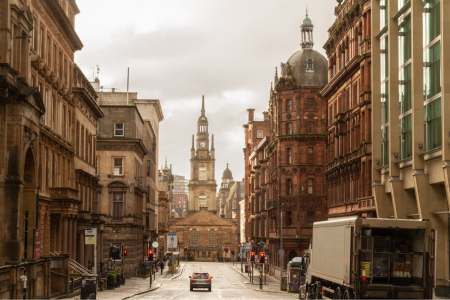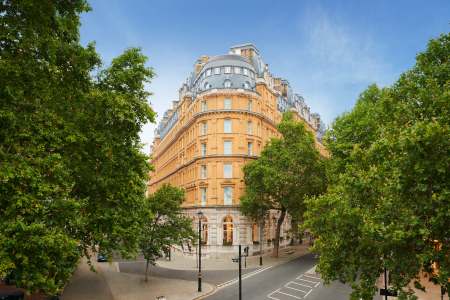Heritage / Culture | National Parks | Beaches | Food | San Jose | Festivals | People | Weather | Visas | Flights | Getting Around | Safety | SIM Cards / Internet
Costa Rica travel is rich, varied and wonderful. Whether you are exploring the Costa Rica jungle or relaxing on one of the Central American nations’s numerous beaches, you will soon realise why it is a world leader in nature-related travel.
And this appreciation of the natural world is deeply embedded in the culture of the country.
Costa Rica welcomes visitors of all budget levels from camping to pampering. Its people are friendly, Costa Rica safety is the highest in Latin America. You will find popular resorts filled with other travellers as well as off-the-track villages where foreigners are rarely seen.
The capital, San Jose, has some places of interest; however, the gems for visitors are always within easy access in a small country with a network of public transport or private car hire choices, making Costa Rica holidays simplicity itself.
With so much to choose from it’s difficult to plan a trip to Costa Rica, so read on for more guidance on Costa Rica travel for the Over 40s.
Costa Rica Heritage and Culture
The Americas were settled by migrants moving southwards approximately 15,000 years ago, though there is still considerable debate over this. About 12,000 years ago indigenous people settled in what is now Costa Rica. They were organised into over twenty culturally-distinct tribes and numbered in the tens of thousands.
Columbus led the expedition that brought Costa Rica to the attention of Europe. He arrived at the islands off what is now Puerto Limon at the beginning of the sixteenth century in 1502, on his fourth and final voyage.
It is in dispute whether the country attained the name ‘Rich Coast’ from Columbus himself or the conquistador Gonzalez Davila, who invaded the area in 1520 bringing violence, slavery for those locals captured alive, and disease with him, killing off most of the local tribes. Both Columbus and Davila thought they would find gold here and both were wrong.
The lack of immediate wealth and the inhospitable terrain led to Costa Rica becoming a neglected part of the Spanish Empire. The central plateau was slowly settled with farming communities. As few indigenous tribes survived the conquest they were not forced to work on large haciendas as elsewhere in the Americas. Instead, the small farms of the settlers formed the basis for future stability.
Administratively, the area was part of the Viceroyalty of New Spain, the imperial name for subjugated Mexico, and administered from Guatemala; however, as Panama was part of Colombia, Costa Rica was far from the centres of power.
The curse of lacking resources such as gold and silver has turned to Costa Rica’s advantage since independence
In 1821, the Mexican Empire broke away from Spain, and two years later the southern provinces of this entity formed the Federal Republic of Central America, which included Costa Rica at its southern-most limit. Those who had wanted to stay with Mexico were defeated by the republicans who wanted regional independence. Costa Rica continued as part of the short-lived Central American Federation. That collapsed into civil war in 1838 between conservatives, liberals and separatists. Costa Rica’s full independence came at the end of this fighting and as the Federation collapsed.
The curse of lacking resources such as gold and silver has turned to Costa Rica’s advantage since independence. The Spanish ignored rather than plundered the area and prosperity came with the planting of coffee and other agricultural produce; however, this attracted the US mercenary and opportunist, William Walker, and his army of freebooters or ‘filibusters’.
Walker first attacked Nicaragua then Costa Rica. From the ensuing war the nation claimed its hero Juan Santamaria, a drummer boy who was killed in an attack on Walker’s base. The Costa Rican army subsequently played a key role in defeating Walker’s forces in the wider region.
With the defeat of Walker, Costa Rica’s independence was again confirmed and peace and stability returned. Unlike many other Latin American countries it has maintained a stable democracy until the present day, with three exceptions. From 1917 to 1919 there was a short-lived military dictatorship that was overthrown. In 1938 a general strike broke the power of overseas firms like the United Fruit Company, then finally in 1948 there was a brief and bloody civil war that led to the abolition of the army.
The country has been democratic ever since.
Costa Rican culture comes from the traditions of its peoples. The culture of the Afro-Caribbean citizens of the nation is apparent in the Limon Carnival. Juan Santamaria Day celebrates the Latin pride of the nation’s continued independence, and the Fiesta de los Diablitos has its roots in indigenous traditions.
Perhaps it is all captured perfectly in the nation’s motto: pura vida, which literally means ‘pure life’. It is a form of greeting, a way of saying farewell, and how Costa Ricans express their pride in the many achievements of their country.
Did You Know?
Since 1949 Costa Rica has had no standing army. It is also one of the most politically stable Latin American nations. No army and political stability, could this be a coincidence?
Our Costa Rica Travel Articles
Costa Rica National Parks and Nature
With 28 national parks in total, three selected by UNESCO as World Heritage Sites, we have selected our favourites to enjoy on your Costa Rica travel. Our advice is to book yourself a Costa Rica eco tour, you will never regret it.
Irazu Volcano National Park, near Cartago
This volcano last erupted in 1994 and is close to San Jose. It is the tallest active volcano in the country, and the dry main crater, as well as the Diego de la Haya Crater with its green lake, are well worth making the visit. The park clouds over as the day progresses, so go early.
Arenal Volcano National Park
From almost anywhere in the country you can jump on a tour to the classic, cone-shaped Arenal Volcano. It stands some 5,437 feet high now that bursts of activity quietened down in 2010. The park contains lodges, 290 square miles of protected area that has eight of the twelve micro-climates in the nation, Arenal Lake, hot springs and many species of birds.
Tenorio Volcano National Park, Guanacaste
Tenorio Volcano National Park, is in Guanacaste on the Pacific side of the country. The volcano is dormant but the Rio Celeste Waterfall, geysers and hot springs are all worth seeing.
Rincon de la Vieja National Park, Guanacaste
Over 6,200 feet tall and active, Rincon is associated with a legend of a woman who lost her lover when her father threw him into the volcano. The story says that she still wanders the slopes and that people come to ‘the corner of the old woman’ as the name of the volcano literally translates, to enjoy the restorative cures that the volcano’s waters are said to have. Rincon de la Vieja Volcano last erupted in 2011, and there are geysers, waterfalls and mud baths within the park’s grounds.
Tortuguero National Park
Even though you need a plane or boat to get here it is well-worth including in your Costa Rica holidays. Indeed, it is likely to make a great impression on you, especially if you remember those classic wildlife documentaries of baby turtles struggling to reach the sea. Tortuguero is not just about turtles, as the park has eleven different habitats and a great part of the trip consists of travelling the waterways looking at the vegetation, wildlife and birds.
Manuel Antonio National Park
Famous for its white sand beaches and the nearby coral reefs, the park is small though varied. Behind the beach is a tropical forest.
Ballena Marine National Park, South Pacific Coast
Ballena means whale in Spanish and this is the park you visit to see the humpback whales come to breed. There are two whale watching seasons: July to October and December to March. A series of attractive beaches are also within the park’s boundaries.
Monteverde Cloud Forest Reserve
One of the more famous Costa Rican national parks, Monteverde was created in 1972. About 2.5% of all the species in the world live in this small area, 10% of the plants in the park are unique to this area, and you will find 50% of all the wildlife and plant life of Costa Rica within this park. Monteverde also spans the continental divide so you can stride from the Pacific to the Caribbean here, or straddle both halves.
Corcovado National Park, Osa Peninsula
Located on the remote and protected Osa Peninsula in the south west of the country, this is Costa Rica’s largest national park. Come here to see tapirs, squirrel monkeys, harpy eagles, scarlet macaws and, if you are lucky, jaguars. The lodges of the park are hard to get to and the park consists of walking trails, where you will need a guide in order to fully appreciate the biodiversity around you.
Carara National Park, Central Pacific Coast
This is another rain-forested national park close to popular beach areas on the Pacific coast, which makes it great for a day out. It is very popular with bird-watchers. If you are fascinated by crocodiles then you should stop at the Tarcoles River Bridge. Below, you will see crocs up to 15 feet long, though at a safe distance. The park has walking trails.
Palo Verde National Park, Guanacaste
This park is unique as it is one of mangroves and marshes, as well as some forest as the Tempisque River reaches the sea. Such a micro-climate is a draw for bird-watchers and tours can be arranged on boats. The park’s flora and fauna is more abundant in the rainy season.
Costa Rica: World Leader?
Costa Rica has been rightly recognised as a world leader in not trying to destroy the planet we depend upon. It is the only country to meet the UNDP’s five criteria on environmental sustainability and plans to be carbon neutral by 2021. Costa Rica is beginning an ambitious scheme to move from petrol to battery-charged road transport. Some 24% of the country is covered by primary forest and another 27% in other forms of woodland. It also regularly comes very high in country-wide surveys of well-being and happiness.
Costa Rica Beaches
From the hundreds to choose from, here are some special treats to sample on your Costa Rica travel:
Playa Conchal, near Tamarindo has white sand, pale blue sea and not too much in-your-face development on the beach. The large Westin Playa Conchal Resort sits away from the beach, leaving the beauty little changed. Tamarindo Beach is also worth a mention. It’s a quiet town with a number of retirees and a clean beach, which is also great for beginner surfers.
Discover more about surfing in Costa Rica in Surfing Begins at 40.
Santa Teresa, on the Nicoya Peninsular is one of the beaches that has stayed generally beyond the reach of the developers. It can be reached by the water taxi from Jaco to Montezuma and also has gentle surfing waves. This is just one of many incredible and little-visited beaches in the Nicoya Peninsular.
For a beautiful beach in a national park, look no further than Manuel Antonio, further south on the Pacific Coast from Santa Teresa. In addition to a beach that is kept pristine, it has tropical rainforest behind it and coral reefs that are great to explore for snorkelers.
On the Caribbean side, consider Punta Uva Beach near Puerto Viejo, which, like Manuel Antonio has protected rainforest behind it and coral reefs close to the shore. The waves are gentle.
If you want your beach busy and with lots of partying at night you might prefer to head to Jaco, Playa del Coco or Puerto Viejo.
Costa Rica Food
Costa Rica has perhaps two national dishes you should try on your Costa Rica travel. The first is called gallo pinto or ‘spotted rooster’ which consists of white rice and beans, hence the spots. A staple dish it is served for breakfast with fried plantains, sour cream, eggs and/or cheese. You can also have it for lunch or dinner.
Alternatively, there is ‘casado’ or ‘married man’, which consists of a portion of rice, some beans, meat or fish, and salad. Served for lunch or dinner, optional extras include fried plantains, tortillas and vegetables.
Pescatarians will delight in the wide choice of seafood, including grilled or fried fish, and ceviche has also become popular.
For snacks, try empanadas – corn pockets that are filled with cheese, beef or chicken and fried –, whilst a soup to sample is black beans in a meaty broth.
Tres leches, or ‘three milks’, made from a mix of cream, evaporated and condensed milk is a popular dessert across the region. You may also discover rice pudding on some menus.
A common condiment is salsa lizano, which is a little like Worcestershire sauce.
Our Top 5 Costa Rica National Parks
(This list is inevitably somewhat subjective, but here are our top 5 national parks)
Monteverde Cloud Forest Reserve
Arenal Volcano National Park
Tortuguero National Park
Manuel Antonio National Park
Corcovado National Park, Osa Peninsula
(read National Parks Section for details)
San Jose Costa Rica Capital
The capital of Costa Rica is probably not a place you will spend a lot of time on your Costa Rica travel. However, it does have some places of interest including the Pre-Colombian Gold Museum, the Jade Museum and the National Museum. Unfortunately, it has lost much of its older buildings and colonial architecture.
San Jose’s population is about 340,000, though the greater metropolitan area around it contains more than two million people, out of a total population of some 5 million. It is, therefore, the transportation hub. As such, the bus terminals here are at the heart of a network of routes stretching all over the country.
To get around the capital, catch one of the many bright red taxis patrolling the streets. These are metered and relatively inexpensive.
There are a large number of restaurants serving local, international, Mexican, Indian, Chinese and Italian cuisine as well as sushi bars and steakhouses. San Jose has a wide range of nightlife options including artisanal beer, discos, live music, cocktail bars and salsa/merengue clubs.
Costa Rica Festivals
There are a wide range of Costa Rica festivals celebrating the rich and diverse culture of this wonderful country. We suggest you take in the following on your Costa Rica holidays.
The Costa Rica Blues Festival, (held on 16 February, 2019), brings a range of US-based bands down to Potrero Beach in Guanacaste. Run by an NGO, profits are ploughed back into rural communities.
For runners there is the Ultra Trail at Arenal Lake, (held on 6 and 7 April, 2019). There are Races ranging from 5k to 80k snaking through some amazing natural beauty – including rainforest and the lake –; all of this taking place in the shadows of the volcano of the same name.
As covered in the history section above, Juan Santamaría Day, on 11 April, recognises Costa Rica’s national hero, who was killed whilst ending William Walker’s colonialist pretensions in 1856. Though the celebrations are nationwide, Alajuela, his birthplace, is the most famous one with its parades, marching bands, concerts and dances.
Easter is a time to see the re-enactments and processions honouring the last days of Jesus’ life. As it is also the end of Lent look for dried cod soup, traditional pastries, sweet flat breads and rice pudding.
For a huge, free street party head to the Limón Carnival on and around 12 October 2019 on the Caribbean side of the nation. Expect parades, night-time fireworks and calypso and reggae music. The event provides a glimpse of Costa Rica’s Caribbean heritage.
La Ruta de los Conquistadores, or ‘La Ruta’, (31 October to 2 November 2019) is a gruelling mountain bike race from the Pacific to the Caribbean Coast. In three days competitors are expected to cover 400 kilometres (250 miles).
The Fiesta de los Diablitos, from 30 December 2019 until 2 January 2020 is held in the south-western town of Boruca and organised by the indigenous community. Over several days the event tells the indigenous people’s version of the Spanish conquest. Masks are worn and on the final day the bull, which symbolises the Conquistadores, is burnt to much celebration.
Costa Rica Photos
Some of the sights to enjoy on your Costa Rica travel
All photos used on this Guide to Costa Rica Holidays are courtesy of Costa Rica Tourism Board (visitcostarica.com).
Costa Rica People
Ethnically, about 84% of the population is Latino, 7% Black, 2.5% Indigenous, 0.2% Asian and the remaining are of mixed race.
Costa Rica Weather
For a small country there is a fair variety of micro-climates in Costa Rica. In general it is tropical and therefore warm, though it is milder in San Jose and chilly in the mountains after dark.
The capital sits on a plateau between two mountain ranges at 3,600 feet so it loses the sticky humidity of the coast and has pleasant days and cool nights. Its rainy season is from May to November, though rain here can sometimes mean a quick deluge then back to sunshine or more likely slower, more sustained precipitation.
In the mountains over 6,500 feet it can be cold, especially from December to February, and in the high peaks it can freeze at night, so it is best to pack some warm clothing for your Costa Rica holidays.
The coastal areas are warm, but the rainy seasons are very different depending on which side of the country you are. Most of the Pacific coast has the same rainy season as San Jose, so it is dry here from December to April. The north and central parts get less rain and the flora more resembles a savannah than a tropical rainforest.
The Caribbean coast and the southern part of the Pacific coast on the border with Panama have rain all year round, over 120 inches of it, in fact. There is slightly less in February to March and September to October, though it is still wet. The winds tend to blow onto the shore and there are high levels of humidity. There will be some sun but a lot of cloud as well.
There are 12 words for rain in Costa Rica.
Costa Rica Visas
As part of the policy to promote tourism, many nations enjoy visa-free travel to Costa Rica, though you will be expected to show a return ticket if asked. This includes most nations in the Americas, Europe and the Caribbean; however, check before you travel.
For further information, visit here.
Citizens from many countries do not need a visa to visit Costa Rica. Find out if you need one, and how to get it, here.
Flights to Costa Rica
Two airports are regularly open for visitors. The biggest is Juan Santamaria International Airport in the capital, San Jose, and the other one, located on the Pacific coast, is Daniel Oduber International Airport in Liberia. This is much quieter, but convenient if you plan to arrive in this part of the country.
As well as flights from the Central American region, many arrive from the Caribbean, South and North America, as well as Europe. You can book your fight for your Costa Rica holidays below.
Latest News from Costa Rica and Special Offers
Getting Around on Your Costa Rica Travel
Developing the perfect Costa Rica travel itinerary can be tricky, but travelling around the country on your own is simplicity itself. You can hire a car for your Costa Rica holidays at the airports or in major cities. But where is the fun in that?
Alternately, use the network of buses that cover the country. The buses are cheap and comfortable, though few have air-conditioning.
A ferry connects Puntarenas to Paquera and Naranjo, and there is also a boat service from Jaco to Montezuma on the Nicoya Peninsular.
Local buses run around the major cities and in the larger commuter area around San Jose. Watch out as there is much congestion in the streets of San Jose around rush hour, so allow yourself extra time if you are travelling then.
Costa Rica Safety and Health
Costa Rica is much safer than most other parts of Latin America; however, care should be taken while on your Costa Rica travel when walking the streets of San Jose, and other big cities, after dark. Not all areas of the capital are safe. As a rule of thumb, stick to the areas where there are a lot of people, or take a taxi.
Outside of the cities care should be taken over personal belongings. Do not leave them unattended.
In some parts of Latin America, the police can be a mixed blessing. That is not the case in Costa Rica where they are honest; however, they are unlikely to speak much English. Read our tips on safety in Latin America before setting off on your Costa Rica holidays.
Costa Rica SIM Cards / Internet
Local SIM cards are readily available to use, including at the international airports upon arrival on your Costa Rica holidays. Many shops and kiosks around the country sell them.
There are four mobile phone providers – Kolbi, Movistar, Claro, Tuyo móvil. A SIM card should cost you under $5 (£4).
Your phone needs to take cards and be unlocked. To get more credit you “recargar”. This is also readily available at stores around the country.
Very remote areas may have poor or no reception.
Costa Rica Population
The population of Costa Rica is around 5,000,000.
Costa Rica Flag and Coat of Arms
The flag has a central horizontal red band, two white bands, either side and then blue bands at the upper and lower edge of the flag. The central red band is wider than the other colours.
The coat of arms shows three tall mountain peaks in the centre ground with a sea and a sailing ship in the foreground and also in the background symbolising the oceans either side of the land.
Costa Rica Currency
The colón is the national currency, though dollars are widely accepted, except perhaps in some of the more remote areas.
Costa Rica Time zone
The time in Costa Rica is GMT / UTC -6 hours. There is no daylight saving.
Costa Rica Country Code
The dialling code for Costa Rica is +506.
Costa Rica Language
Spanish is the national language. English is spoken in tourist spots and on the Caribbean coast.
Booking a hotel or flights for your Costa Rica travel? Look no further.
Are you booking a hotel, a budget hostel, or a five-star resort for your Costa Rica travel? Our hotel and flight comparison engine will help you find the best flight and hotel deals from around the world. Each booking also helps to support our website while still getting you a great deal on booking hotels and flights. Get started below.
We search hundreds of online travel agent (OTA) websites to find you the best available deals on Costa Rica hotels and flights to Costa Rica. Your booking is made directly and securely through the travel operator website (e.g. Agoda, Booking.com), we don’t handle your bookings or any payments directly.



